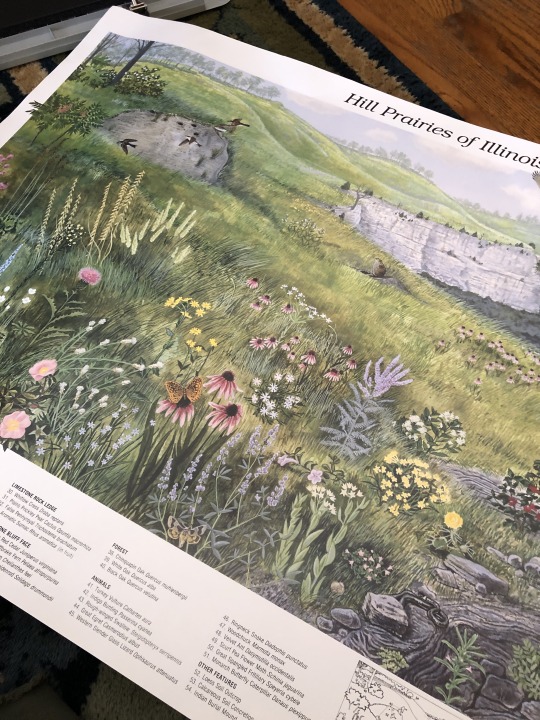Text

07.15.22 prairie chicken
[id: an illustration of a prairie chicken on a yellow background. It is standing on one foot and is surrounded by blue feathers and stylized grass. End.]
427 notes
·
View notes
Text
you guys 🙈💦
I thought it was a big ego move to order 50 copies, that's such a big number I could never sell them
but they're sold out!!!! I am overwhelmed by your support, this is beyond what I could ever expect!
75 notes
·
View notes
Note
is there any way to read your finished dissertation? I regularly use the excerpts you posted to talk about symbiotic ecological relationships. the comic format is so accessible and so pleasant. it pulls people in. I work in urban ag in the midwest and i just can’t describe how useful the full resource would be.
I will pay for it.
YES! I finally have copies on hand!
88 notes
·
View notes
Text
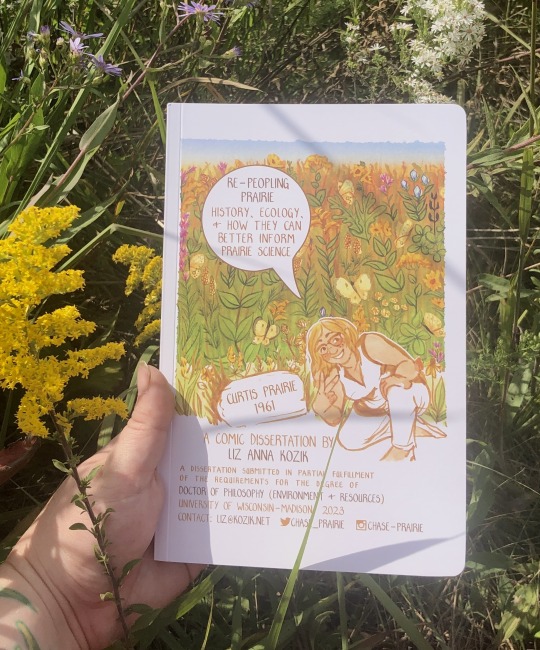

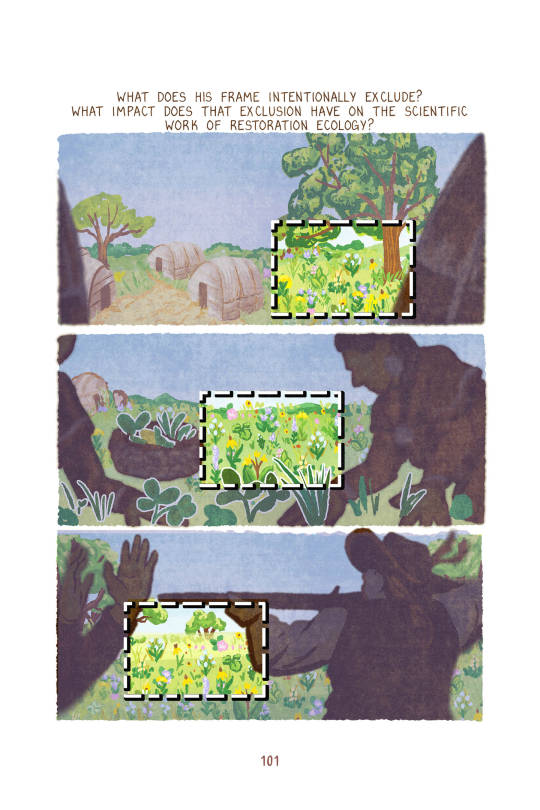
You might have seen my posts around and wondered where they came from and where they were going. Turns out they were just a small part of my 150 page comic dissertation that now you can own yourself! Prairies, history, restoration, pawpaws and foraging, it's got all the sorts of things you see posted on my blog!
236 notes
·
View notes
Text
Want to take home 150 pages of comics on prairies, history, foraging, and restoration, all drawn by yours truly? This is my final revised dissertation and contains a decade of prairie research all in one place.
The dissertation is officially real!
643 notes
·
View notes
Text
But seriously, when we got our property, it was all just…grass. A sterile grass moonscape, like a billion other yards. With two big old maple trees. Just grass and maples, that was it.
But then I got my grubby little paws on it, and I immediately stopped fertilizing, spraying, and bagging up grass clippings and leaves. I ripped up sod and put in flowers and vegetables. I put down nice thick blankets of mulch around the flowers and vegetables.
When I first was sweating my way through stripping sod, I saw a grand total of 1 worm and 0 ladybugs. The ground was compacted into something that would bend shovel blades.
Now, six years later, I can’t dig a planting hole without turning up fourteen earthworms, and there are so many ladybugs here. Not the invasive asian lady beetles; native ladybugs. They winter over in the mulch and in the brush pile. I see thousands of them.
The soil is soft and rich. There are birds that come to eat, and bees of many sorts.
Like this is something that you, yourself, can absolutely change. This is something that you, personally, can make a difference in.
160K notes
·
View notes
Text
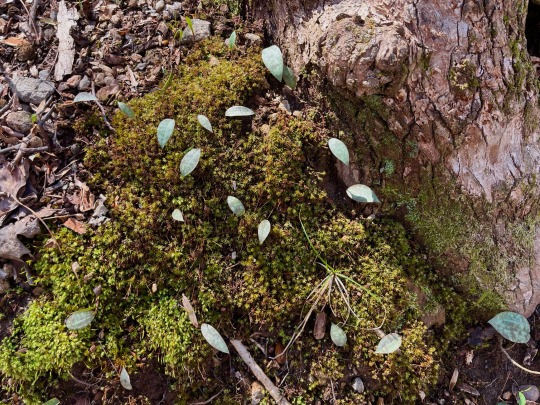
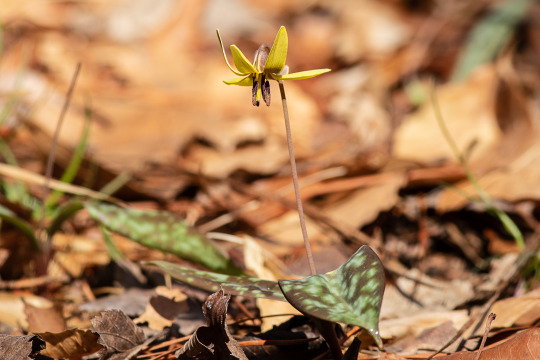
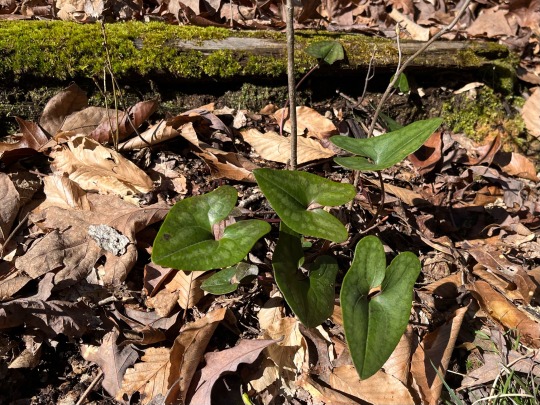
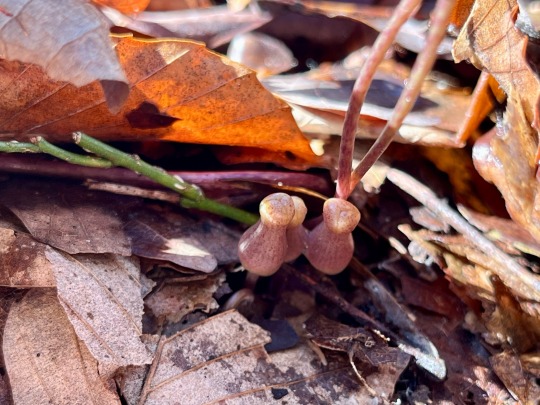

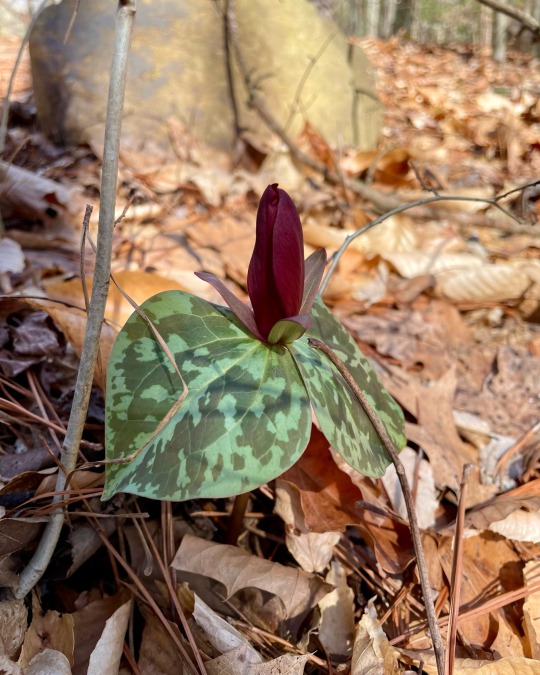
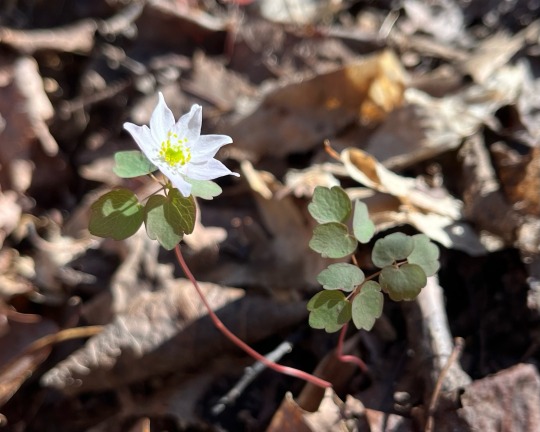
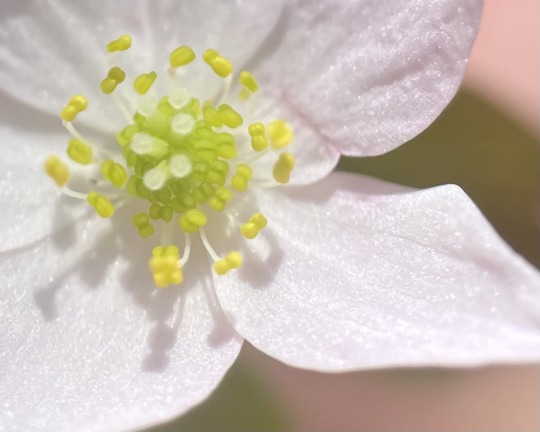


It’s been a while since we’ve gotten out. Too long a while. By row:
(Yellow) Trout lily (Erythronium americanum, Liliaceae)
Little brown jug (Hexastylis arifolia, Aristolochiaceae)
Bloody butcher (Trillium cuneatum, Melanthiaceae)
Rue anemone (Thalictrum thalictroides, Ranunculaceae)
Mayapple (Podophyllum peltatum, Berberidaceae)
These are all a week old, and the trout lilies are already (almost) all bloomless — they ain’t called ephemerals for nothing. I am absolutely thrilled for the return to bloom of our local Hexastylis offerings, and the trilliums are of course a favorite too. An excellent month for mottled leaves.
Many thanks to @krieper for the use of her photos in rows 1, 3, and 5. Much credit also to these deciduously wooded hillsides, which have previously given us some beeches and their drops.
147 notes
·
View notes
Text
started the process to get Serious Major Meds (Spravato) for my depression, they say itll take a few weeks before we know if insurance will cover it but crossing all fingers
the thing is, depression is incredibly inconvenient. i would much prefer if i had any interest in things or like, living at all
69 notes
·
View notes
Text
ew, fuck off terfs, this blog is not for you, get that ass banned
44 notes
·
View notes
Text
‘Despair is paralysis. It robs us of agency. It blinds us to put own power and the power of the earth. Environmental despair is a poison every bit as destructive as the methylated mercury in the bottom of Onondaga Lake. But how can we submit to despair while the land is saying “Help”?
Restoration is a powerful antidote to despair. Restoration offers concrete means by which humans can once again enter into positive, creative relationships with the more-than-human world, meeting responsibility that are simultaneously material and spiritual. It’s not enough to grieve. It’s not enough to just stop doing bad things.’
Robin Wall Kimmerer, Braiding Sweetgrass: Indigenous Wisdom, Scientific Knowledge and the Teachings of Plants
1K notes
·
View notes
Note
Scuttling into ur askbox like a little beetle
i think i recall you reblogging/posting things about geography and culture + human effect on it - I vaguely recall a piece of art where it showed a blurred out, cropped piece of people fighting, and focused instead on the flora in the scene.
ANYWAY! getting back on track. seeing that piece inspired me to take a course this semester called "people and the land: cultural geography". and the whole reason I came to your askbox was to ask if you had any suggested reading materials? We'll get stuff in class ofc, but I am curious to see if there's any bias of materials on the prof's side vs someone else.
Phew that was a long ask. thank you o/!
That sounds like Liz Anna Kozik’s piece : D So happy it stuck with you! I love her work!!
As for your ask, what an awesome class! Land-human relationships are my bullshit, and I really enjoyed my own cultural geography class.
Thinking back on my schooling, I would say about 70% of my classes fell in with the “everything is awful and humans are the worst” narrative, and the other 30% made time for land-human relationships other than the extractive hellscape that most people currently live under. So, full disclosure, when I think of “bias,” that’s what I think of. You grow up in the miasma, it’s hard to imagine that there’s any other way of living. It’s also hard to say without knowing the professor, but I think, in general, it’s good to be mindful of who is or isn’t telling the story.
ANYWAY. All that in mind, here’s some articles about people-land relations that I think are neat:
The Environment and Society portal - I like their digital exhibits especially. I remember enjoying Oceans in Three Paradoxes and The Northwest Passage. Great place to wander around and pick a random article that catches your eye.
Of Deserts and Decolonization: Dispelling Myths About Drylands – obligatory desert propaganda. An article looking at how colonial mindsets about deserts disrupt existing relationships and hurt both people and land, and also how those attitudes shape environmentalism/conservation/etc. still today.
The Miracle of the Commons – lovingly challenging the Tragedy of the Commons with a creative solution to poaching and human-animal conflict in South Africa, Zimbabwe, and Namibia. Great article to sit in discomfort about (productively!)
Biodiversity: The Variety of Life that Sustains Our Own – Contains one of my go-to examples when explaining how humans can be good for land and biodiversity, the story of Quitobaquito Springs (and its sister spring Ki:towak, though the author doesn’t mention it here.)
The Environmental History Timeline - just fun to look at, especially the further you go back. It’s funny to spot where a young branch of history is trying *really hard* to reframe how academia thinks about the past, by bringing the invisible landscape forward:
2700 BCE — Epic of Gilgamesh describes vast tracts of cedar forests in what is now southern Iraq. Gilgamesh defies the gods and cuts down the forest, and in return the gods say they will curse Sumeria with fire (or possibly drought). By 2100 BCE, soil erosion and salt buildup have devastated agriculture. One Sumerian wrote that the “earth turned white.” Civilization moved north to Babylonia and Assyria. Again, deforestation becomes a factor in the rise and subsequent fall of these civilizations. (Perlin, 1991).
2700 BC — Some of the first laws protecting the remaining forests are decreed in Ur, Messopotamia. (Grove, 1995).
^^^ fucking around and finding out forever and ever and ever.
79 notes
·
View notes
Text
"There's no wildlife here. The land is barren and stripped from farming chemicals"
I just saw two blue herons fly super low over our house, which means they've been fishing in the creek behind us, which means there's fish there. Which means there's bugs to feed the fish and algae to feed the bugs, which means the water and soil is worth something damnit.
Yes, I'm sorry the suburb isn't the grand, sweeping swath of uninhabited land that you so desperately crave but would learn to loathe, but saying that the land here is barren and that there's no wildlife here and that there's nothing to salvage- that's a You problem. Nature might be struggling, but against all odds it is at least trying.
16K notes
·
View notes
Text
hello I would like one full time job please 🥲🥲🥲🥲🥲🥲
41 notes
·
View notes



